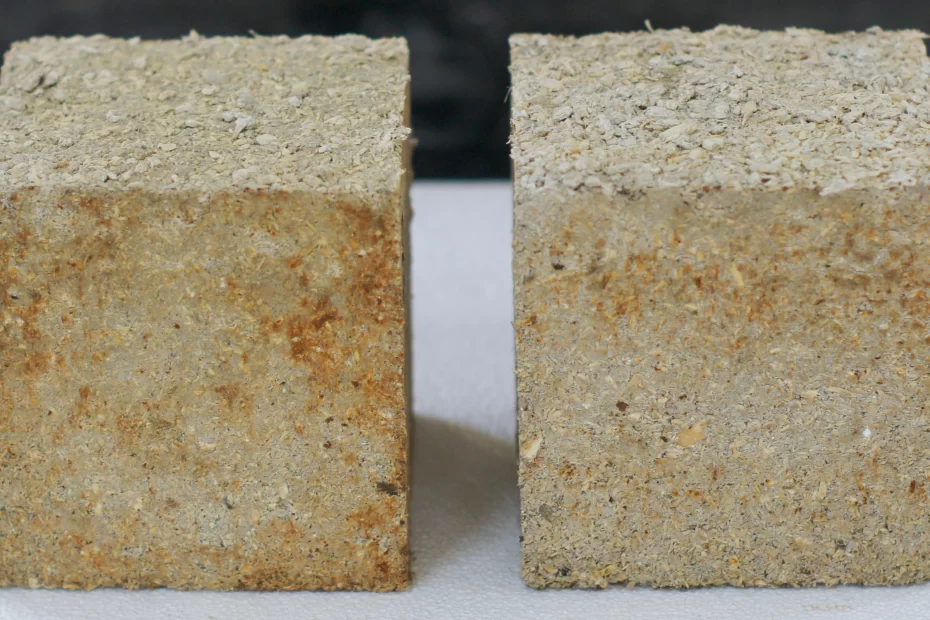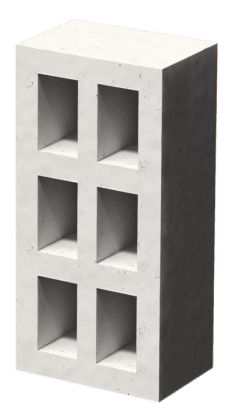Often in the world of architecture and construction we see the term natural being used interchangeably with sustainable. Obviously then, consumers and novice practitioners end up promoting these natural, but environmentally hazardous materials. Since forever, burnt clay bricks have been promoted as being natural and therefore the obvious choice for our homes. But we all know the damage they’ve been causing to our health and planet. In India, we produce 250 to 300 billion bricks. Accounting for the most conservative average carbon footprint per burnt clay brick of around 0.5 kg CO2, brick kilns alone are responsible for 125 to 150 million tons of CO2 emissions – about 4-5% of India’s annual carbon emissions. But you know what? That’s not the only issue. With coal becoming super expensive, brick kilns have started using all kinds of cheaper solid fuels which release toxic gases. The beautiful, silky smooth, natural soils that are used to make red bricks are also the soils needed to produce food. And when arable land becomes inarable, forests are chopped down for agriculture. We all know the problems with not having forests.
A similar trend has emerged in the recent past for an equally older material – lime. No doubt one of the oldest binding materials, lime has gone through several millennia of transformations before it became the modern-day Portland cement. While its history is quite fascinating, the environmental impact of lime was quite evident even when it was the primary building material. Today, kilns have evolved and are more energy efficient, and less polluting, but have an acute climate impact, nevertheless. Building limes are produced from naturally occurring limestone. The quarried limestone is burned at around 900-1000OC in a kiln using coal, which releases large amounts of carbon dioxide. Further, carbon dioxide also gets released as a product of the chemical reaction in which limestone turns into quicklime. In total, approximately 900 kg of carbon dioxide is emitted to produce 1 tonne of building lime. ‘Artificial’ Portland cements have a much lower carbon footprint these days. And then there is the problem of poor strength of lime. Applications are limited and it is just a general hassle to work with.
Obviously then, burnt clay bricks and building limes are natural materials, but totally unsustainable. A few other examples of natural but unsustainable construction materials are forest wood, river sand, quarried stone/aggregates, and mud/soil/earth. However, there are several natural materials that are very sustainable – thatch, bamboo, etc., which come from a renewable bio-based source. Here’s a list of a few common natural materials and their sustainable alternatives:
| Natural Materials | Sustainable Alternatives |
| Burnt Clay Bricks, Stabilized Soil Blocks, Laterite Stone Blocks | Agrocrete® Blocks, Fly Ash Bricks |
| Lime | BINDR™, Portland Slag Cement |
| River Sand | Slag sand |
| Quarried Coarse Aggregates | Sintered fly ash aggregates, recycled aggregates |
| Mud/Soil/Earth | Slags, fly ash, quarry dust |
It could get quite tricky to identify which materials are actually sustainable, natural or not, especially when there are so many synthetic materials that are unsustainable. One of the easiest ways to do so is to demand the embodied carbon data of your potential purchase and compare it with the alternatives. If the manufacturer is unable to provide the information, it is more than likely that the embodied carbon data is available on the internet. Just Google it! But knowledge is key. It is imperative that we continue to learn as much as we can about climate change and its causes if we hope to live in a better world.



